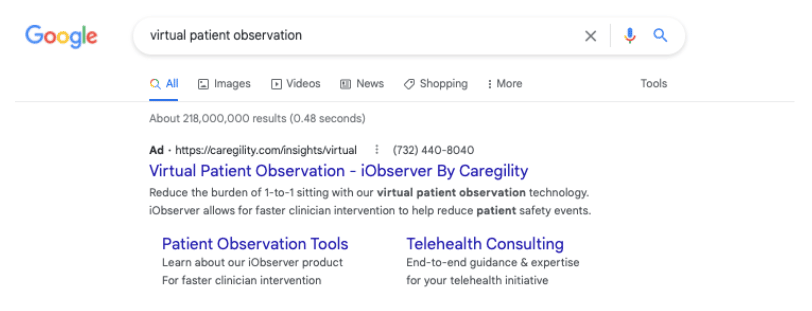
Here’s a common scenario. You’ve created a reasonably successful company, perhaps somewhere in the $10 – $50 million annual revenue range. You’ve arrived here without much formal marketing. On the advice of your marketing leadership and CEO peers, you decide to dip your toes in the content marketing water. You assume that after 3-6 months of producing remarkable blog posts, eBooks, videos and the like that at a bare minimum you’ll accumulate readers and views, and let’s face it, you really thought the effort would generate leads at this point.
You are steadfast in your belief that content marketing was the right approach, but you look at the data and your blog posts generate maybe 100 page views, and there are no leads in sight.
How can you fix this?
If you have recently committed to content marketing, it’s important to remember that patience is a virtue — with the right strategy and planning, your content will deliver results but it takes time to realize the fruits of your efforts. However, if your company is new to content marketing but with limited brand awareness, then a paid media approach presents itself as an opportunity to not only bolster your visibility in the market, but also drive readership/viewership as well as leads right now.
The Flavors of B2B Content Distribution: Earned, Owned, and Paid Media
Let’s start with the basics. Perhaps the most underemphasized pillar of content marketing is an effective content distribution strategy. The “if you build it, they will come” approach doesn’t work — not in 2022.
A comprehensive content distribution strategy uses earned, owned, and paid media to establish a “surround the castle” effect where you’re reaching your customers and prospects in every possible channel, and with every possible content type they pay attention to.
There are distinct differences between the three:
- Earned media: Traditionally associated with public relations and press mentions, in today’s digital world earned media also includes 3rd-party reviews, reposts of content, contributed articles, and SEO-driven wins.
- Owned media: Owned media is the media you control. The most common types are your website, blog, social media channels, and email campaigns.
- Paid media: Paid media simply serves as an additional method, beyond earned and owned, to amplify your content and increase your reach using media channels where your potential customers are already consuming information.
One quick clarification is necessary. Make no mistake: You do pay for the activity associated with earned and owned media success. You’re just not paying for the media itself, but rather for the people and platforms you use to drive the effort. Don’t fool yourself into thinking earned and owned are somehow more cost effective than paid media without looking at it through that lens.
The Most Common Paid Media Methods in B2B Content Marketing
While there are a myriad of channels and methods to consider for paid media, the three places we normally start for B2B content marketing are LinkedIn sponsored updates (also known as “boosting”), LinkedIn display ads, as well as Google paid search.
Least Complex: LinkedIn Boosting
You’re already posting your content on your company’s LinkedIn page. Maybe an individual post is already performing well and you want to seize the momentum, or maybe it’s performing poorly and you think it deserves more attention. The latter scenario is generally applied to time-sensitive content.
By selecting your target audience criteria as it pertains to your content and your business objectives (i.e. do you want website traffic or post engagement?), you can boost your LinkedIn page updates in a matter of moments to enhance audience reach and get more qualified eyes on your content. The overall setup is quick — it does not require much more than a credit card and a thoughtful approach to targeting. You choose your budget, and based on how much you want to spend, the cost can vary between $1 to $3 per click.

More Complex Than Boosting: LinkedIn Display Ads
Creating a LinkedIn display ad campaign is far more complex than the sponsored updates mentioned above, however, a well-designed LinkedIn Display Ad strategy allows you to display graphic ads that don’t appear on your LinkedIn page timeline to an extremely customizable audience.
From a content marketing standpoint, this allows you to set up campaigns for a gated piece of content like an eBook or whitepaper and optimize for different outcomes, including driving conversions, building your email database, and increasing awareness of your content brand.
Most Complex: Google Paid Search
Some view running a paid search campaign as basic: choose the keywords you want to show up on when your target audience searches on Google, create some basic text ads, and voila, qualified visitors show up at your website.
If only it were this easy. In fact, we know Google is squarely focused on delivering the best user experiences possible, and this is especially true for ads as well. Keyword refinement and bidding adjustments are a major part of the equation — and even if you have the highest bid, Google won’t necessarily serve up your ad if your associated landing page doesn’t meet the mark for quality and relevance to the intended audience.
Testing potentially dozens, if not hundreds of ads, and the development of landing pages for optimal conversion rates can turn paid search into an arduous effort – not to be handled by a digital marketing novice.
With patience and a consistent test-and-adjust strategy, though, the return on paid search often far exceeds other methods.

Set yourself up for paid media success with these 5 insights
Before you start incorporating paid media into your B2B content marketing strategy, there are a few critical mindset and strategy shifts you need to consider.
1. Patience and budget considerations
If you don’t have the patience nor the budget to not only create campaigns that have a shot at succeeding and then embrace a continuous test-evaluate-improve mindset, you’re not likely going to see a significant return on investment.
2. Run an upfront ROI analysis
Using your own internal benchmarks in addition to industry benchmarks, it’s fairly simple to determine the ROI possibilities of a paid media campaign.
With every client we work with, we run an ROI calculator based on metrics such as estimated clicks, cost per click, conversions and conversion rate, cost per conversion, and then work with the clients’ sales team to understand rates like conversions-to-SQL, SQLs-to-opportunities, and opportunities-to-closed deals. With an understanding of those rates plus the average lifetime revenue per closed deal, we can develop a few potential ROI scenarios.
3. Your sales team needs to be involved (and invested in the effort)
You’re going to need a sales strategy to address both the hand raisers and the I-downloaded-a-piece-of-content-but-I’m-not-ready-to-be-sold types.
The hand raisers are easy, or they should be if you have a well-designed sales process and talented salespeople.
For the prospects in early stage exploratory mode, your sales team will need a different approach, designed to nurture with deeper, related content and not a pushy, “let’s set up a call now” mindset. That said, we see it over and over again – play the nurture and patience game, and some subset of those exploratory types end up buying weeks or even months later.
4. The ad platforms (LinkedIn, Google) do not cover your tracking/reporting needs
LinkedIn, Google, Facebook, Twitter and others all have very robust reporting and analytics tools to help you track things like spend and performance. But they cannot close the loop for you nor should they be expected to.
At a bare minimum, you’ll need to consider using tools like Google Analytics for tracking paid-driven user behavior, HotJar or CrazyEgg for heat mapping and understanding how users interact with your landing pages, as well as your CRM for lead source tracking.
5. Do not underestimate the paid media-brand awareness impact
I started this post talking about how companies who have taken the plunge into content marketing can accelerate their efforts with an effective paid media approach.
This is especially true for companies with limited brand awareness as paid media can have a significant impact on your visibility by getting your message in front of your target audience at the right time. If it didn’t have that impact, I’m quite certain companies would not be willing to spend $6 million per Super Bowl ad spot.
While your digital ad spend may seem minuscule compared to a television spot during the Super Bowl, the digital paid media programs you run do have a significant impact on brand awareness.
And brand awareness, as you know, makes every other form of marketing work a whole lot better.
Give the content marketing investment a chance to work
Can your company achieve content marketing success without paid media? Sure.
But are you willing to wait 2-3 years to gain a true understanding of what’s working and the possible return? If you’re like the folks we work with, you’re screaming, “Helllll no!”
So, that leaves you with a conundrum —you know the content marketing approach is the right one but you (and/or the powers that be) are also not willing to be patient.
There’s only one answer: paid media. It is perhaps the fastest learning accelerator in digital marketing — helping you increase your reach, bolster your awareness, and attract new leads.


